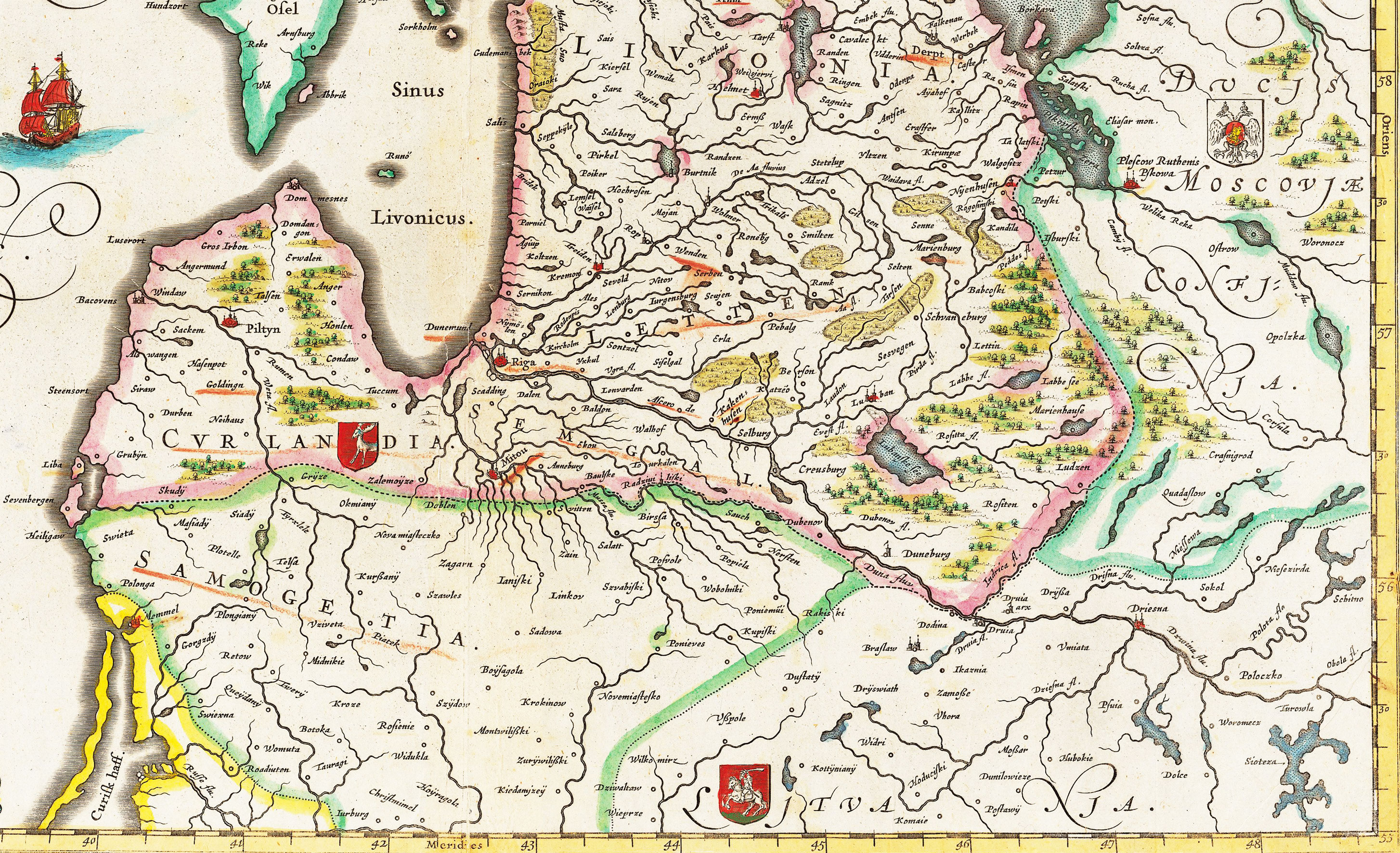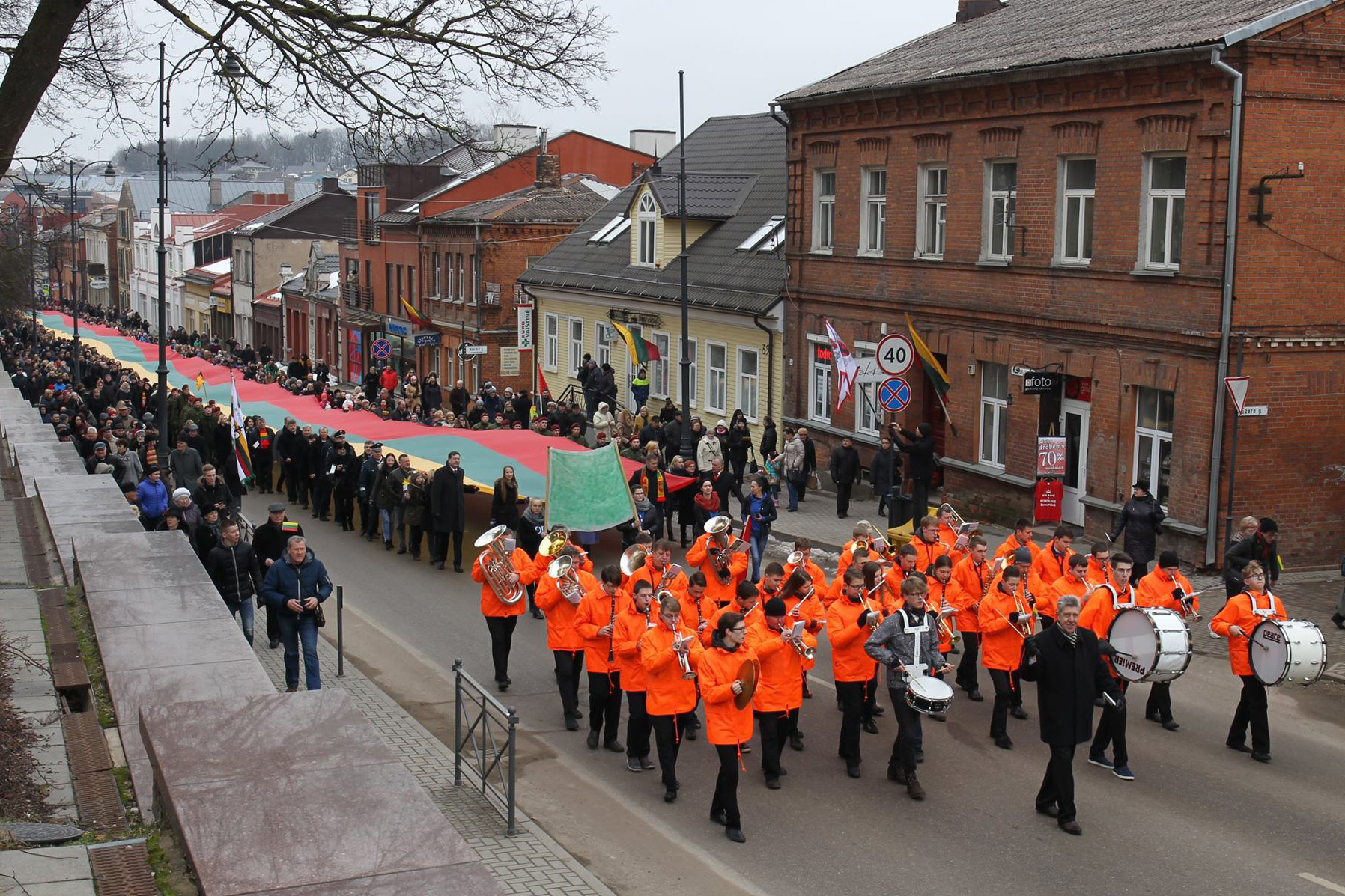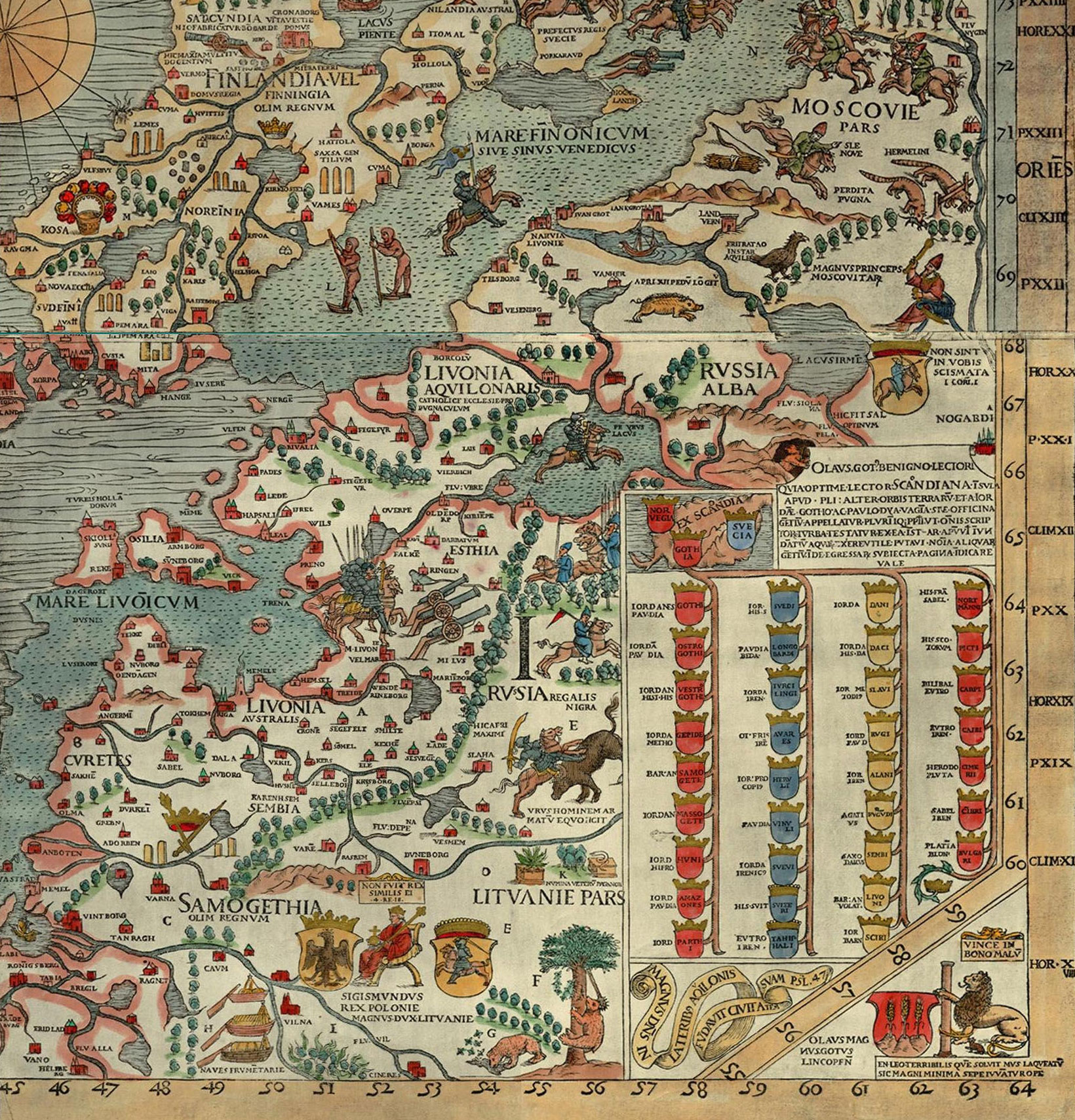|
Samogitia
Samogitia, often known by its Lithuanian language, Lithuanian name ''Žemaitija'' (Samogitian language, Samogitian: ''Žemaitėjė''; see Samogitia#Etymology and alternative names, below for alternative and historical names) is one of the five cultural regions of Lithuania and formerly one of the two core administrative divisions of the Grand Duchy of Lithuania alongside Lithuania proper. Žemaitija is located in northwestern Lithuania. Its capital city is Telšiai and the largest city is Šiauliai (located on the border between Samogitia and Aukštaitija). Throughout centuries, Samogitia developed a separate culture featuring diverse architecture, folk costumes, dances, songs, traditions, and a distinct Samogitian language. Famous landmarks include Tauragė Castle, Plungė Manor and Hill of Crosses. Etymology and alternative names The region is primarily referred to by its Lithuanian name, ''Žemaitija'', in both local and national contexts. The Latin language, Latin-derived ... [...More Info...] [...Related Items...] OR: [Wikipedia] [Google] [Baidu] |
Samogitian Language
Samogitian ( or sometimes , or ; ), is an Eastern Baltic language spoken primarily in Samogitia and is often considered a dialect of Lithuanian. It has preserved many features of the extinct Curonian language, such as specific phonological traits and vocabulary. Samogitian differs significantly from standard Lithuanian in phonetics, morphology, syntax, and lexis, with unique archaic features not found in other Lithuanian dialects. This difference often causes speakers of Aukštaitian dialects to not be able to understand speakers of Samogitian. The use of Samogitian is currently in decline, with limited presence in media and education. Efforts are being made to preserve the language, including local initiatives and cultural societies. History The Samogitian language, heavily influenced by Curonian, originated from the East Baltic proto-Samogitian dialect which was close to Aukštaitian dialects. During the 5th century, Proto-Samogitians migrated from the lowlands o ... [...More Info...] [...Related Items...] OR: [Wikipedia] [Google] [Baidu] |
Duchy Of Samogitia
The Duchy of Samogitia (, , ) was an administrative unit of the Grand Duchy of Lithuania from 1422 (and from 1569, a member country of the Polish–Lithuanian Commonwealth). Between 1422 and 1441 it was known as the Eldership of Samogitia. Since the 1540s the Grand Duke of Lithuania also held the title of Duke of Samogitia, although the actual ruler of the province, responsible to the Grand Duke, was known as the General Elder () of Samogitia who was self-elected by the Samogitian nobility. The Duchy was located in the western part of the present Republic of Lithuania. Historically, in the west it had access to the Baltic Sea; in the north, it bordered the Duchy of Courland and Ducal Prussia in the south. During the Middle Ages and until the last partition in 1795, Samogitia had clearly defined borders as the Duchy of Samogitia. Afterwards the area encompassed the Samogitian Diocese. Today Samogitia is one of several ethnographic regions and is not defined administra ... [...More Info...] [...Related Items...] OR: [Wikipedia] [Google] [Baidu] |
Lithuanian Language
Lithuanian (, ) is an East Baltic languages, East Baltic language belonging to the Baltic languages, Baltic branch of the Indo-European language family. It is the language of Lithuanians and the official language of Lithuania as well as one of the official languages of the European Union. There are approximately 2.8 million native Lithuanian speakers in Lithuania and about 1 million speakers elsewhere. Around half a million inhabitants of Lithuania of non-Lithuanian background speak Lithuanian daily as a second language. Lithuanian is closely related to neighbouring Latvian language, Latvian, though the two languages are not mutually intelligible. It is written in a Latin script. In some respects, some linguists consider it to be the most conservative (language), conservative of the existing Indo-European languages, retaining features of the Proto-Indo-European language that had disappeared through development from other descendant languages. History Among Indo-European languag ... [...More Info...] [...Related Items...] OR: [Wikipedia] [Google] [Baidu] |
Telšiai
Telšiai (; Samogitian language, Samogitian: ''Telšē'') is a city in Lithuania with about 21,499 inhabitants. It is the capital of Telšiai County and Samogitia region, and it is located on the shores of Lake Mastis. Telšiai is one of the oldest cities in Lithuania, probably dating earlier than the 14th century. Between the 15th and 20th centuries, Telšiai became a district capital. Until 1795, Telšiai County formed the Duchy of Samogitia within the Grand Duchy of Lithuania. Between 1795 and 1802 it was included in the Vilnius Governorate. In 1873, Telšiai was transferred to the Kovno Governorate. Names The name Telšiai is a variant of the same Lithuanian language root (''-telš-'', ''-tilž-'') as Tilžė or Talsi with the meaning connected to water. The name Telšiai or Telšē in Samogitian dialect of Lithuanian is derived from a verb ''telkšoti'' (literally, ''to be flooded with water'', ''to splash'', etc.). It is a cognate to the Greek thalassa - ''sea'', compare ... [...More Info...] [...Related Items...] OR: [Wikipedia] [Google] [Baidu] |
Samogitians
Samogitians ( Samogitian: ''žemaitē'', , ) are the inhabitants of Samogitia, an ethnographic region of Lithuania. Many speak the Samogitian language, which in Lithuania is mostly considered a dialect of the Lithuanian language together with the Aukštaitian dialect. The Samogitian language differs the most from the standard Lithuanian language. Whether Samogitians are considered to be a distinct ethnic group or merely a subset of Lithuanians varies. However, 2,169 people declared their ethnicity as Samogitian during the Lithuanian census of 2011, of whom 53.9% live in Telšiai County. The political recognition and cultural understanding of the Samogitian ethnicity has, however, changed drastically throughout the last few centuries as 448,022 people declared themselves Samogitians, not Lithuanians, in the 1897 Russian Empire census. History On 13 July 1260, the Samogitians decisively defeated the joint forces of the Teutonic Knights from Prussia and Livonian Order from Liv ... [...More Info...] [...Related Items...] OR: [Wikipedia] [Google] [Baidu] |
Varniai
Varniai (; Samogitian language, Samogitian: ''Varnē'') is a city in the Telšiai County, western Lithuania. In the Middle Ages the city was known as Medininkai (Samogitian language, Samogitian: ''Medėninkā''). Etymology ''Medininkai'' or ''Medenike'' was first mentioned in 1320. This town existed until the end of the 16th century, when the town of ''Varniai'' was founded in the 15th century north of Medininkai, on the left bank of the Varnelė river. The latter name is derived from the Varnelė River, which flows through the town. As early as 1904, Vaižgantas mentions its name as ''Varnė''. In other languages the town is known by: , . In 1491, the Kulm law was granted to Medininkai, and in 1635, the Magdeburg rights were granted to the renamed Varniai. Eventually, the name of Medininkai disappeared from common usage altogether. History Town established in the 14th century, on the bank of the Varnelė River, near an important Samogitian castle. It was the center of the Sa ... [...More Info...] [...Related Items...] OR: [Wikipedia] [Google] [Baidu] |
Aukštaitija
Aukštaitija (; literally ''Highland'' or ''Upland'') is the name of one of five ethnographic regions of Lithuania. The name comes from the fact that the lands are in the upper basin of the Nemunas, as opposed to the Lowlands that begin from Šiauliai westward. Although Kaunas is surrounded by Aukštaitija, the city itself is not considered to be a part of any ethnographic region in most cases. Geography Aukštaitija is in the northeast part of Lithuania and also encompasses a small part of Latvia and Belarus. The largest city located entirely within this region, Panevėžys, is considered to be the capital, though not in a political sense. Sometimes Utena is regarded as a symbolical capital. The largest cities by population are: * Panevėžys – 84,587 * Jonava – 26,423 * Utena – 25,397 * Kėdainiai – 22,677 * Ukmergė – 20,154 * Visaginas – 18,024 * Radviliškis – 15,161 The region has many lakes, mainly on the eastern side. Subdivisions History Historic ... [...More Info...] [...Related Items...] OR: [Wikipedia] [Google] [Baidu] |
Cultural Regions Of Lithuania
Lithuania can be divided into five historical and cultural regions (called ethnographic regions). The exact borders are not fully clear, as the regions are not official political or administrative units. They are delimited by culture, such as country traditions, traditional lifestyle, songs, tales, etc. To some extent, regions correspond to the zones of Lithuanian language dialects. This correspondence, however, is by no means strict. For example, although the Dzūkian dialect is called South Aukštaitian, it does not mean that Dzūkija is part of Aukštaitija. In certain parts of some regions, dialects of other regions are spoken, while for example in Samogitia, there are three indigenous dialects (southern, northern and western Samogitian), some of which are subdivided into subdialects. Regions in politics No region, except for Samogitia, has ever been a political or an administrative entity. Throughout most of Lithuanian history the cultural regions of Aukštaitija, Suva ... [...More Info...] [...Related Items...] OR: [Wikipedia] [Google] [Baidu] |
Grand Duchy Of Lithuania
The Grand Duchy of Lithuania was a sovereign state in northeastern Europe that existed from the 13th century, succeeding the Kingdom of Lithuania, to the late 18th century, when the territory was suppressed during the 1795 Partitions of Poland, partitions of Poland–Lithuania. The state was founded by Lithuanians (tribe), Lithuanians, who were at the time a Lithuanian mythology, polytheistic nation of several united Baltic tribes from Aukštaitija. By 1440 the grand duchy had become the largest European state, controlling an area from the Baltic Sea in the north to the Black Sea in the south. The grand duchy expanded to include large portions of the former Kievan Rus' and other neighbouring states, including what is now Belarus, Lithuania, most of Ukraine as well as parts of Latvia, Moldova, Poland and Russia. At its greatest extent, in the 15th century, it was the largest state in Europe. It was a multinational state, multi-ethnic and multiconfessionalism, multiconfessional sta ... [...More Info...] [...Related Items...] OR: [Wikipedia] [Google] [Baidu] |
Lithuania
Lithuania, officially the Republic of Lithuania, is a country in the Baltic region of Europe. It is one of three Baltic states and lies on the eastern shore of the Baltic Sea, bordered by Latvia to the north, Belarus to the east and south, Poland to the south, and the Russian exclave, semi-exclave of Kaliningrad Oblast to the southwest, with a Maritime boundary, maritime border with Sweden to the west. Lithuania covers an area of , with a population of 2.89 million. Its capital and largest city is Vilnius; other major cities include Kaunas, Klaipėda, Šiauliai and Panevėžys. Lithuanians who are the titular nation and form the majority of the country's population, belong to the ethnolinguistic group of Balts and speak Lithuanian language, Lithuanian. For millennia, the southeastern shores of the Baltic Sea were inhabited by various Balts, Baltic tribes. In the 1230s, Lithuanian lands were united for the first time by Mindaugas, who formed the Kingdom of Lithuania on 6 July ... [...More Info...] [...Related Items...] OR: [Wikipedia] [Google] [Baidu] |






